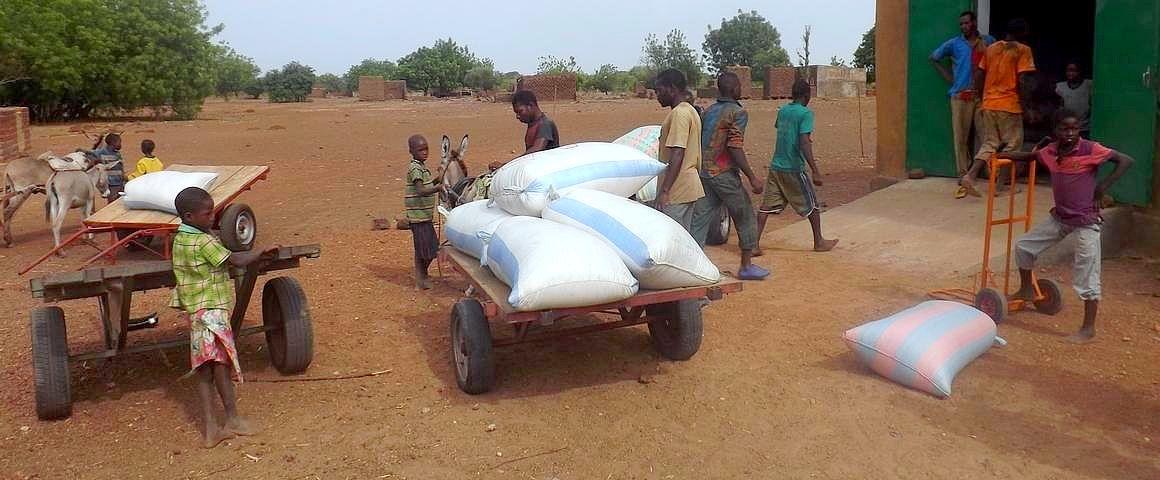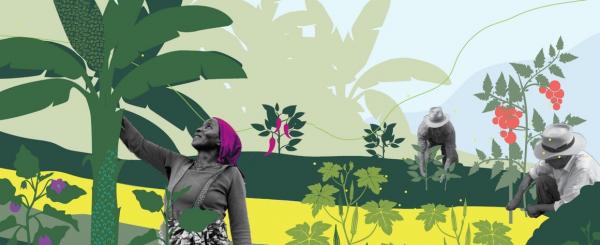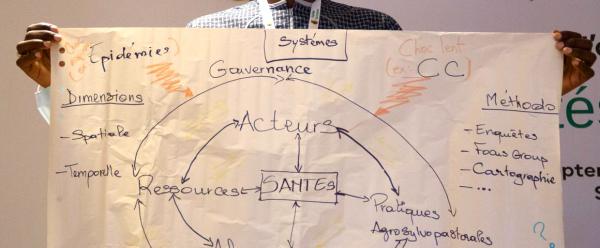Just out 7 January 2026
- Home
- CIRAD news
- News
- Encouraging grain storage in the Sahel
Storing a portion of harvested grain in exchange for a loan: the advantages of inventory credit in the Sahel

Releasing grain stocks at the end of the inventory credit period prior to the lean season in the village of Magnimasso, Mouhoun, Burkina Faso © T. Le Cotty, CIRAD
Many rural areas in the Sahel are marked by a lean season: the transition period between the depletion of food stocks and the new harvest. Millet, sorghum and maize are the staple foods for local people, and the longer the lean season, the more food-insecure the areas concerned become.
In response to this, growing numbers of farmers are turning to inventory credit. This loan-storage device provides producers with microloans in exchange for storing part of their harvest. In addition to shortening the lean season, the device serves to boost incomes and encourage agricultural investment.
Conclusive results in western Burkina Faso
Between 2013 and 2016, eight villages in Burkina Faso were granted access to warehouses funded by the EU FARMAF project. Following those three years, the benefits for household food security were clearly visible. For instance, on average, millet stocks available per household were estimated at 69 kg more than in villages without inventory credit. The lean period was cut by two weeks, and dietary diversity was higher.
Agricultural investment also saw significant benefits: the cultivated area per household grew by around 1.8 hectare per farm, while there were between 1 and 2 heads of cattle more on average. Lastly, the analyses highlighted the accounting profit over a year for producers.
One of the main reasons for the number of opportunities offered by inventory credit is the protection it provides against postharvest social pressure. Just after harvesting, families come under a range of social and economic pressures that often drive them to use up their stocks quickly. Those pressures may be ceremonies or debt repayments, or many other immediate demands. The inventory credit mechanism allows households to escape such social pressures while providing them for the cash they need in the short term.
The three conditions for successful inventory credit
Inventory credit is implemented by a farmers’ organization and a financial institution. There are three conditions for its success.
The first concerns infrastructures: grain must be stored in warehouses built of concrete, rather than earth, to reduce the risks of grain damage by pests or water ingress. This condition echoes the second: the system must ensure the quality of the grain stored.
Lastly, and above all, inventory credit relies on trust between financial institutions, producers' organizations and traders. In Burkina Faso, the Ministry of Agriculture, Animal and Resources and Fisheries provides mediation services across the country, and is working to define a legal framework to secure market transactions.
Other strategies are under study and will be adapted to each village, for instance depending on whether grain is intended for sale or for self-consumption.
Download Perspective 61: Inventory credit, a system to improve food security in sub-Saharan Africa
Perspective
With Perspective, CIRAD sets out to suggest new lines of debate and action, backed up by research work, albeit without presenting an official institutional position.
This series of 4-page summaries presents novel ideas or policies on development issues of strategic importance for countries in the South: food security, land tenure, climate change, energy security, forest management, standards, etc.



























